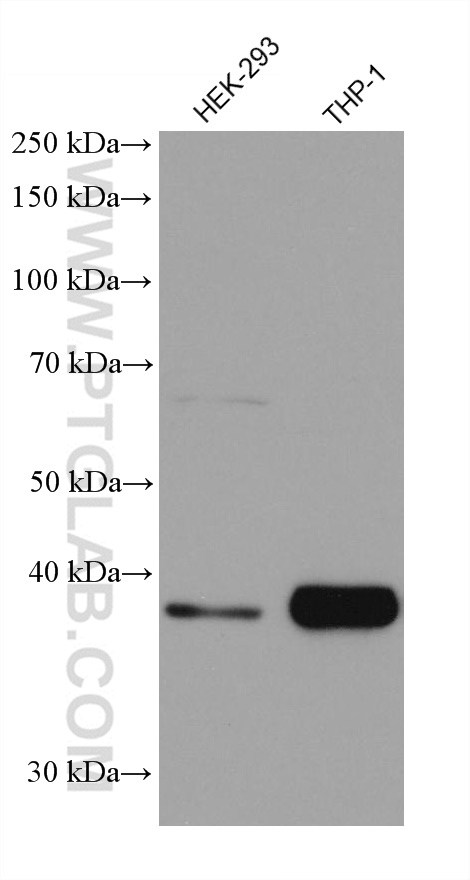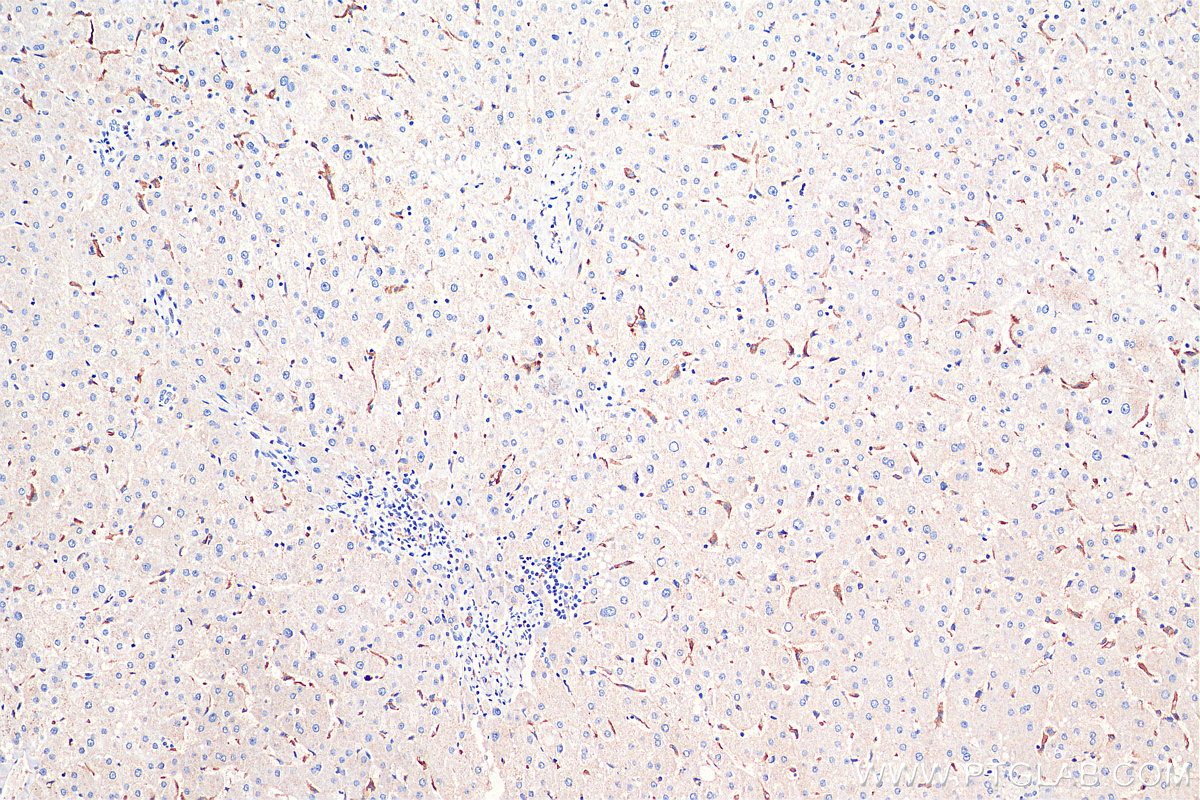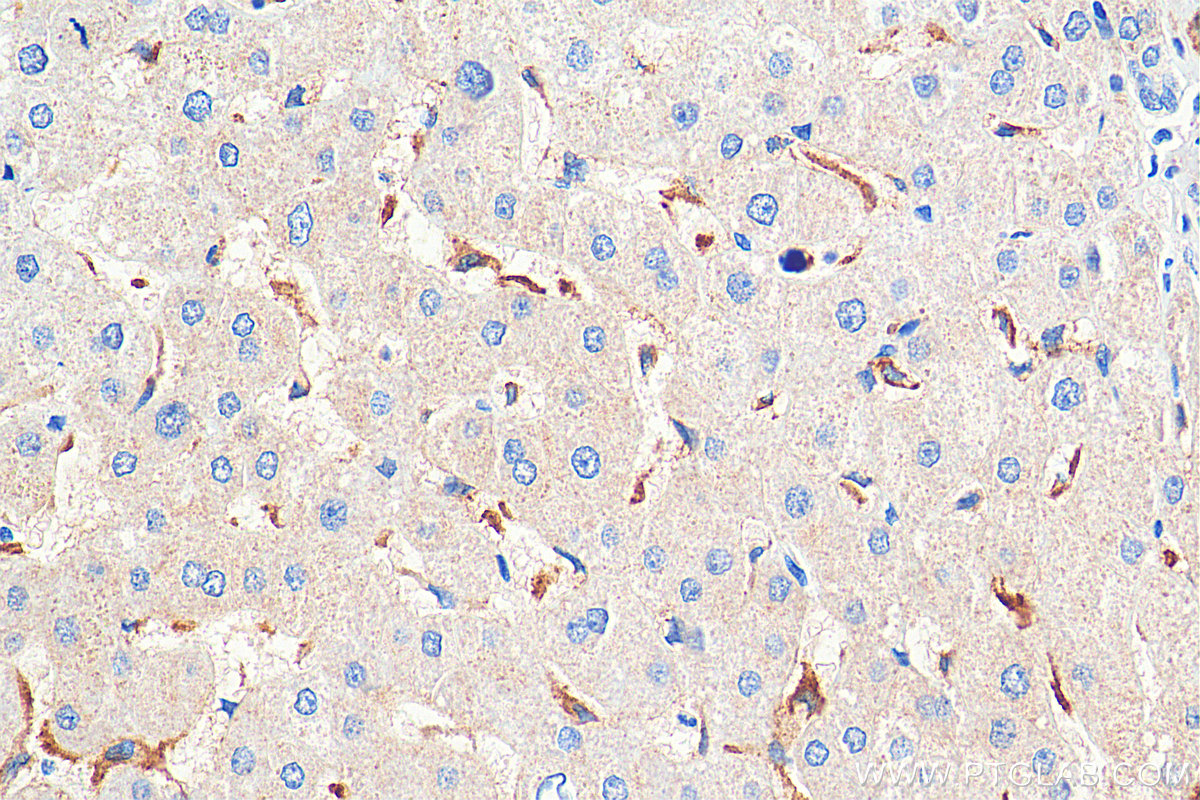验证数据展示
经过测试的应用
| Positive WB detected in | HEK-293 cells, THP-1 cells |
| Positive IHC detected in | human liver tissue Note: suggested antigen retrieval with TE buffer pH 9.0; (*) Alternatively, antigen retrieval may be performed with citrate buffer pH 6.0 |
推荐稀释比
| 应用 | 推荐稀释比 |
|---|---|
| Western Blot (WB) | WB : 1:2000-1:10000 |
| Immunohistochemistry (IHC) | IHC : 1:5000-1:20000 |
| It is recommended that this reagent should be titrated in each testing system to obtain optimal results. | |
| Sample-dependent, Check data in validation data gallery. | |
产品信息
67944-1-Ig targets FcRn in WB, IHC, ELISA applications and shows reactivity with Human samples.
| 经测试应用 | WB, IHC, ELISA Application Description |
| 经测试反应性 | Human |
| 免疫原 | FcRn fusion protein Ag31173 种属同源性预测 |
| 宿主/亚型 | Mouse / IgG1 |
| 抗体类别 | Monoclonal |
| 产品类型 | Antibody |
| 全称 | Fc fragment of IgG, receptor, transporter, alpha |
| 别名 | alpha chain, FCGRT, FCRN, Neonatal Fc receptor |
| 计算分子量 | 40 kDa |
| 观测分子量 | 35-40 kDa |
| GenBank蛋白编号 | BC008734 |
| 基因名称 | FcRn |
| Gene ID (NCBI) | 2217 |
| RRID | AB_2918696 |
| 偶联类型 | Unconjugated |
| 形式 | Liquid |
| 纯化方式 | Protein G purification |
| UNIPROT ID | P55899 |
| 储存缓冲液 | PBS with 0.02% sodium azide and 50% glycerol pH 7.3. |
| 储存条件 | Store at -20°C. Stable for one year after shipment. Aliquoting is unnecessary for -20oC storage. |
背景介绍
The neonatal Fc receptor for IgG (FcRn) is a membrane-associated receptor which acts as a key determinant of IgG homeostasis. FcRn is similar in structure to major histocompatibility class I molecules. It is a heterodimer composed of a alpha chain associated with β2-microglobulin. FcRn transfers IgG from the mother to the fetus across the placenta and the proximal small intestine. In addition, throughout life, FcRn protects IgG from degradation and thus regulates the serum half-life of IgG (PMID: 17703228).
实验方案
| Product Specific Protocols | |
|---|---|
| WB protocol for FcRn antibody 67944-1-Ig | Download protocol |
| IHC protocol for FcRn antibody 67944-1-Ig | Download protocol |
| Standard Protocols | |
|---|---|
| Click here to view our Standard Protocols |


